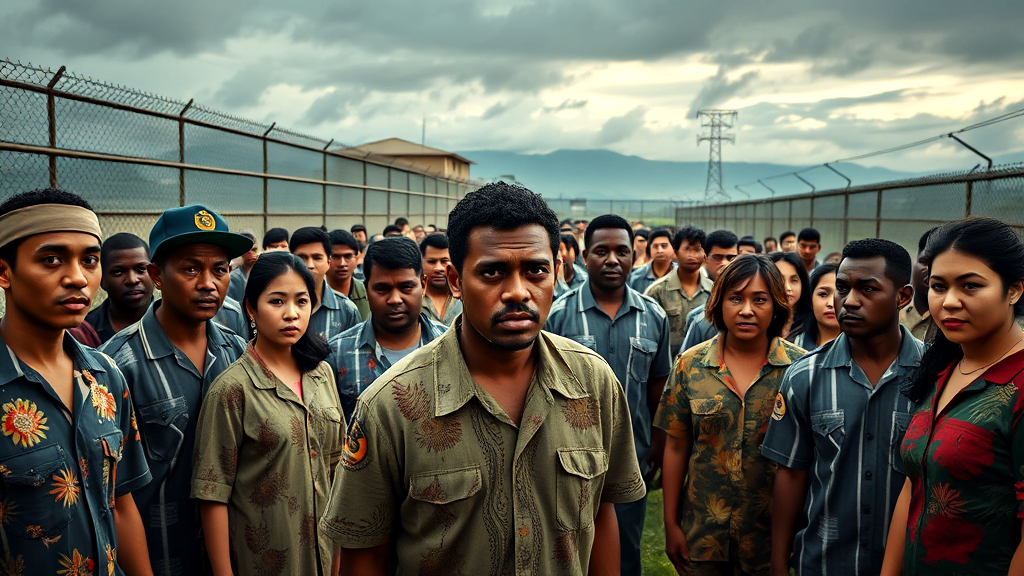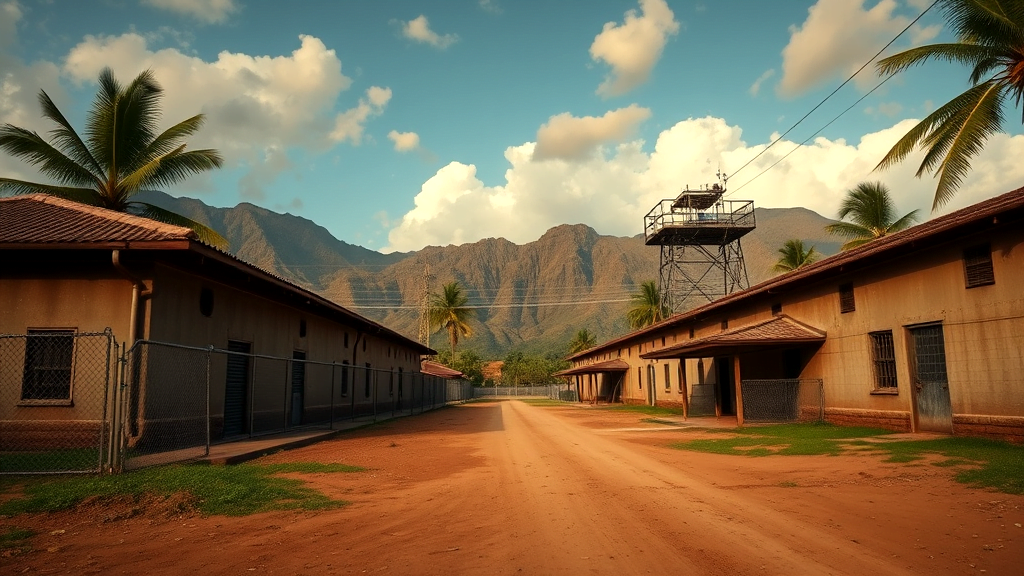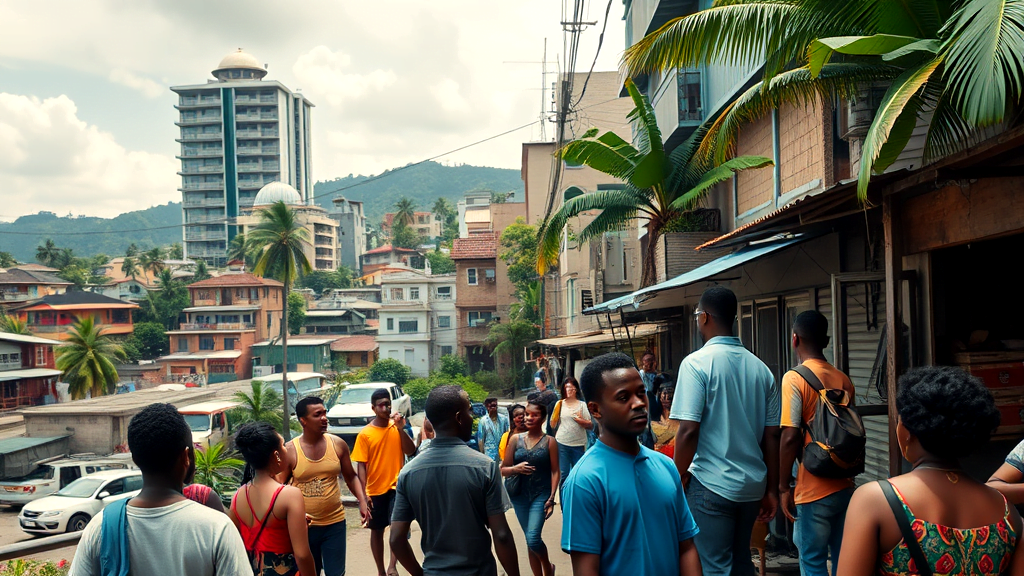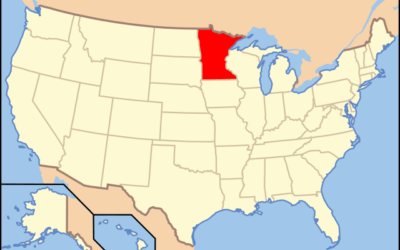Hawaii’s Incarceration Crisis Explained
Hawaii’s incarceration crisis is a complex issue affecting many lives. With a rate of 367 per 100,000 people, the state jails more people than most democracies. How did we get here? This crisis reflects broader issues, including racial disparities. Native Hawaiian people make up 39% of inmates, despite census bureau data suggesting a smaller population percentage. It’s a big problem. The overcrowded state prisons and use of private facilities further complicate the matter.
Even with Honolulu’s crime rate dipping to historic lows, challenges persist. Mass incarceration impacts entire communities. The criminal justice system needs reform to address these disparities. Hawaii failed in many areas, but change is possible. Could community-based alternatives be the answer?

Historical Trends in Imprisonment Rates
Examining the historical trajectory of imprisonment rates reveals a stark rise over 40 years. Hawaii’s incarceration numbers shot up, painting a worrying picture for the criminal justice system. This trend didn’t just happen by magic. Policies emphasizing punitive measures contributed significantly. The census bureau data highlights the mass incarceration reality, with a disproportionate impact on the Native Hawaiian and Pacific Islander communities. Despite a dip in the Honolulu crime rate, Hawaii corrections remains strained. It’s like trying to fit a whale into a fish tank. The reliance on state prisons, which are often overcrowded, is a piece of the puzzle. Reform efforts, akin to patching a leaky boat, are ongoing. Addressing these disparities could reshape Hawaii’s future—a shift from punishment to prevention. Let’s hope this wave of change isn’t just a drop in the ocean.
Racial and Ethnic Disparities in Prisons
Disparities in racial and ethnic representation within Hawaii’s incarceration system are glaring. Native Hawaiians represent a staggering 39% of prisoners, although they aren’t as populous, according to the census bureau. This overrepresentation is not just numbers; it impacts communities deeply. Sentencing practices and out-of-state incarcerations exacerbate the situation.
The Sentencing Project has highlighted these problems for years. It’s like a spotlight on a stage, revealing systemic issues. Meanwhile, Hawaii’s failed attempts for reform continue to lag, leaving many questioning the effectiveness of its criminal justice system. Some argue that mass incarceration doesn’t correlate with reduced crime rates. Rather, it strains communities and state prisons further.
Addressing these disparities isn’t just a task—it’s a necessity. Those championing reform hope for a system that balances justice and rehabilitation. If this change doesn’t happen soon, well, it’ll be like trying to solve a puzzle with missing pieces.
For more about such disparities, refer to the Honolulu Prosecutor’s site.

The Impact on Native Hawaiian Communities
The effects on Native Hawaiian communities are profound. Overrepresentation in state prisons shows a troubling trend. Native Hawaiians make up 39% of the prison population, despite being a smaller portion of the general populace. This disparity is a stark reminder of systemic issues. Sentencing disparities and out-of-state incarceration compound these challenges. The 2010 report from Office of Hawaiian Affairs found 41% of out-of-state prisoners were Native Hawaiian.
The Census Bureau underreports these figures, adding another layer of complexity. This situation is not just a number game; it affects families and communities deeply. Hawaii’s failed attempts to address these issues highlight the need for change. It’s like trying to sail with a broken compass. Tackling mass incarceration could offer a more hopeful future. Addressing these issues might finally mend the current social fabric.
Hawaii Corrections: State Prisons Overview
Peeking into Hawaii’s state prisons, challenges such as overcrowding and crumbling facilities dominate discussions. The Halawa Correctional Facility often comes up in conversations about these pressing issues. The use of private prisons since 1994 has been a controversial strategy. Critics say such facilities focus on profit over rehabilitation, raising ethical concerns.
Native Hawaiian communities face systemic challenges, including disproportionate sentencing. The Census Bureau data often underrepresents them, adding to the complexity. The Sentencing Project highlights reforms aimed at reducing imprisonment, but progress is slow.
Interestingly, even with low crime rates, Hawaii’s incarceration rate outpaces many democracies. This anomaly urges us to rethink current methods, focusing on community-based solutions. Reducing reliance on prison might be the key. The current system feels like a patchwork quilt, missing cohesion and fairness. Balancing reforms with cultural sensitivity remains crucial for a brighter future.

Honolulu Crime Rate and Its Effects
Honolulu’s declining crime rates, especially in 2020, offer a glimmer of hope. However, this doesn’t fully translate to reduced Hawaii incarceration numbers. The pandemic led to alternative strategies, temporarily easing the burden on the prison system. Yet, the broader implications remain a tangled web.
Mass incarceration still looms large, affecting the state’s social fabric. With Native Hawaiian communities facing persistent hurdles due to sentencing practices, the system’s fairness often comes into question. The Census Bureau underrepresentation adds another layer of complexity, obscuring the real picture.
Efforts by the Sentencing Project highlight the need for reform, but change is as slow as a turtle’s pace. The impact on Pacific Islander communities underscores the urgency for more comprehensive solutions. Has Hawaii failed in addressing these disparities? It seems so, but the road to reform is just beginning.

The Role of Private Prisons in Hawaii
Exploring how private prisons fit into Hawaii’s incarceration strategy, we see they’ve been around since 1994. But many folks raise eyebrows at the cost and ethics. Profit-driven systems often clash with the island’s community values. Critics highlight inefficiencies and wonder if they truly help reduce crime rates.
Native Hawaiian and Pacific Islander communities feel the impact intensely. Overrepresentation in these facilities is a sore point. The financial burden of sending folks to mainland prisons adds salt to the wound. The Sentencing Project’s findings call for reform, yet progress seems elusive.
Private prisons might not be the knight in shining armor they promised to be. There’s a need for solutions that don’t leave communities hanging. ACLU Hawaii’s bail study suggests alternative approaches worth considering. Is it time to rethink our approach?

Sentencing Practices and Reform Efforts
Recent legislative shifts aim to reshape Hawaii’s sentencing practices, focusing on reducing mass incarceration. These efforts include changes in bail procedures and enhanced oversight. Yet, the challenge remains significant, especially for the overrepresented Native Hawaiian and Pacific Islander populations. Hawaii’s unique crime rates don’t always justify the high incarceration levels. Alternative approaches are essential for real change. The Sentencing Project highlights these disparities, advocating for systemic reforms.
Hawaii’s legal framework struggles to balance justice and fairness. Sentencing reform aims to address these imbalances. Recent efforts include legislative changes focusing on rehabilitation over punishment. Reform must continue tackling racial disparities, ensuring equitable treatment.
Fostering community-driven solutions is key. Embracing innovative practices can reduce reliance on incarceration. Hawaii’s journey toward fair sentencing remains ongoing, requiring persistent advocacy. With continued focus, these reforms could lead Hawaii to a more just future.
Comparing Hawaii to National Crime Rates
Comparing Hawaii’s crime rates with national figures reveals a unique incarceration situation. Despite lower overall crime rates, Hawaii’s incarceration numbers are strikingly high, with 367 per 100,000 residents behind bars. Among these, a significant portion belongs to the Native Hawaiian community, highlighting stark racial and ethnic disparities in sentencing. This overrepresentation is a pressing concern for the state.
Moreover, the use of private prisons since 1994 has sparked debates about cost and ethics. Many argue these facilities prioritize profit over rehabilitation. As a result, reform advocates are pushing for changes. The Sentencing Project has spotlighted Hawaii’s situation, urging systemic reforms to tackle these issues.
Addressing these disparities is crucial for creating a fair and just system. It’s a journey toward equity that demands ongoing efforts and innovative strategies.

The Future of Hawaii’s Criminal Justice System
Looking into the future of Hawaii’s justice system, one can hope for transformation. Hawaii incarceration rates remain high, but change is on the horizon with ongoing reforms. Community-based alternatives are gaining traction, offering a more humane approach.
Emphasizing equity, these changes aim to address racial disparities, especially among Native Hawaiian and Pacific Islander populations. There remains a glaring overrepresentation, which reforms strive to rectify. Corrections systems face challenges, yet potential solutions stir optimism.
Imagine a shift where community support reduces reliance on punitive measures. It’s about crafting policies that reflect Hawaii’s unique cultural tapestry. As crime rates fluctuate, it’s crucial to adapt and innovate, not just incarcerate. Reforms promise a fairer path forward, but they demand commitment and creativity.
Hawaii’s journey involves balancing safety with fairness, ensuring a just future for all. The road’s long, but change is possible with persistent effort.





0 Comments